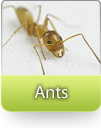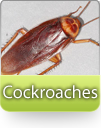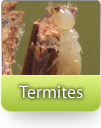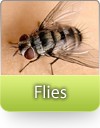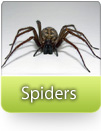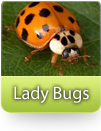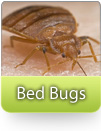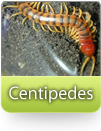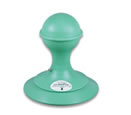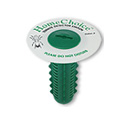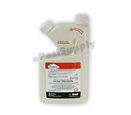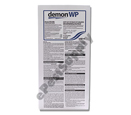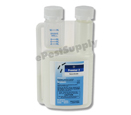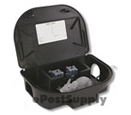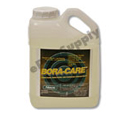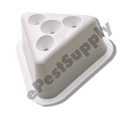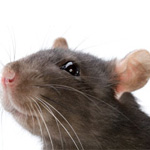TERMITE CONTROL :
Termites have been around for over 250 million years. They are social insects that have caused billions of dollars of damage to homes throughout the United States. Termites feed on cellulose materials with wood being the most common source. They even cause damage to non-cellulose materials, such as plastic pool liners and plastic coating on electrical cables.
Subterranean termites can forage as far as 250 feet from the colony in the soil. Termite workers do not expose themselves to light; they build mud tubes in the soil to the food source above to protect them to exposure to light and dry air. A colony of termites consisting of 250,000 workers, can consume approximately one cubic foot of wood per year. This is equivalent to 20 linear feet of 2 X 4. A regular termite inspection of your home can help you save thousands of dollars in damage.
How do you know if you have Termites?
Look for these clues:
* There are winged insects otherwise known as termite swarmers flying around your house.
* There are many tiny wings lying near windows and the edge of walls , on kitchen & bathroom counters , etc.....
* You may find mud tubes in your crawl space or basement , on the walls , floors , ceilings , light posts , pillars , tree barks , etc........
* Your wall studs and damaged wood that has been eaten from the inside will sound hollow and the damage will be visible.
Termites are small and are pale to brownish black in coloring. People often mistake ants for termites. Ants keep their wings, while termites loose theirs and ants' front wings are larger than their back wings. Ants tend to be longer and have curvier antennae. If you suspect that you have termites, call us immediately so that a professional can appraise your home and recommend a course of action. Termites work slowly, so there is no need to panic, but it is best that you take the time to get your home properly evaluated.
Subterranean termites are the most destructive insect pests of wood in the United States. They cause more than $2 billion in damage each year, more property damage than that caused by fire and windstorm combined. In nature, subterranean termites are beneficial. They break down many dead trees and other wood materials that would otherwise accumulate. The biomass of this breakdown process is recycled to the soil as humus. Problems occur when termites attack the wooden elements of human structures -- homes, businesses and warehouses. Their presence is not readily noticed because they hide their activity behind wallboards, siding or wood trim. Homeowners in all areas of Texas should watch for subterranean termites and take precautions to prevent infestations. To minimize damage from termites, it is helpful to know the description, life cycle and infestation signs of termites as well as preventive and control measures.
Several species of subterranean termites are found in the United States; they live in every state except Alaska (Fig. 1). Two major types in Texas are the most common termite pests that seriously threaten wooden structures:
- The Reticulitermes genera of termites, found throughout the state, decreasing in frequency from the Gulf Coast to the central regions; and
- The introduced Formosan subterranean termite, generally found in the Houston Ship Channel area down to and including Galveston and Texas City, and the Beaumont-Port Arthur-Orange area. Isolated infestations have been reported in other areas of the state; termites are easily transported in timber, particularly landscaping timbers. Refer to L-5233, “Formosan Subterranean Termites.” Subterranean termites are noticed less often in the High Plains and far West Texas. Information in this bulletin applies primarily to the Reticulitermes genera of termites.
ISubterranean termites are social insects that live in nests or colonies in the soil, hence their name “subterranean.” These colonies contain three forms or castes: reproductives, workers and soldiers. Individuals of each caste have several stages: the egg; the larva that develops into a pseudergate and eventually into a brachypterous nymph or soldier; and the adult. Reproductive adults have three forms: primary, secondary and tertiary reproductive
Reproductive males and females can be winged (primary) or wingless (secondary or tertiary). Each can produce new offspring. The bodies of primary reproductives, also called swarmers or alates, vary by species from coal black to pale yellow-brown. Wings may be pale or smoky gray to brown and have few distinct veins. Swarmer termites are about 1/4 to 3/8 inch long.
Secondary and tertiary reproductives in the colony are generally white to cream-colored and may have short wing buds. Developed as needed, they replace a primary queen when she is injured or dies. They also develop in addition to the primary queen and lay eggs for the colony. Supplementary reproductives, including a group of males, workers and soldiers, may become isolated from the main colony and can establish a new colony.
Termite workers make up the largest number of individuals within a colony. Workers are wingless, white to creamy white, and 1/4 to 3/8 inch long. They do all of the work of the colony -- feeding the other castes, grooming the queen, excavating the nest and making tunnels. In working, they chew and eat wood, causing the destruction that makes termites economically important.
Soldiers resemble workers in color and general appearance, except
that soldiers have large, well-developed brownish heads with strong mandibles or jaws.
Soldiers defend the colony against invaders, primarily ants. In some types of termites
generally occurring in arid regions, soldiers are called nasutes. Nasute soldiers have
pear-shaped heads with a long, tube-like projection on the front. They exude a sticky
substance to entrap their enemies. It is important to be able to distinguish between swarming termites
and ants (Fig. 3). They often swarm around the same time of year, but control measures for
each differ greatly.
Both male and female swarmers fly from the colony and travel varying
distances. They are extremely weak fliers; wind currents usually carry those that travel
any distance. Only a small percentage of swarmers survive to develop colonies; the
majority fall prey to birds, toads, insects and other predators. Many also die from
dehydration or injury.
Subterranean termites derive their nutrition from wood and other material containing cellulose. Paper, cotton, burlap or other plant products often are actively attacked and consumed by termites. Subterranean termites cannot digest cellulose directly. They depend on large numbers of one-celled animals (protists) living in the termite hind gut to break down the cellulose to simple acetic acid, which termites can digest. Worker termites and older nymphs consume wood and share their nourishment with the developing young, other workers, soldiers and reproductives.
Termites are very attracted to odors of wood-decaying fungi that, through the decay process, make the wood easier to penetrate. In some instances, the fungi provide a source of nitrogen in the termite diet. Moisture is important to subterranean termites, which have very little resistance to dehydration. To survive, they must maintain contact with the soil (their primary moisture source) or other above-ground moisture sources, such as in structures with defective plumbing or guttering.
Subterranean termites also must protect themselves from temperature
extremes and attack by such natural enemies as ants and other insects. Termites foraging
for food above ground protect themselves with shelter tubes, which are sometimes called
mud tubes (Fig. 4). Worker termites build the tubes from particles of soil or wood and
bits of debris held together by salivary secretions. The tubes may be thinly constructed
or large and thick-walled to accommodate many termites moving vertically between the soil
and the food source. This construction material also is found lining the galleries built
in wood being attacked and aids in identifying termite-damaged wood. Shelter tubes often
are used to bridge masonry or other objects, allowing termites access to a food source
(wood) above ground. Dead trees and brush are the original food source of subterranean
termites. When land is cleared of this material and houses are built on these sites,
termites attack the structures. Termites can enter buildings through wood in direct
contact with the soil, by building shelter tubes over or through foundations, or by
entering directly through cracks or joints in and under foundations. Any material in direct contact with the soil -- such as trees, vines
or plumbing fixtures -- serves as an avenue of infestation. Subterranean termite swarmers
may also be blown into or on structures and then start a new colony.
Control measures include reducing the potential for subterranean termite infestation, preventing termite entry, and applying residual chemicals for remedial treatment.
Inspection
Thorough inspections can determine whether infestations and damage are present, whether remedial control measures are needed, and what conditions can encourage termite attack. Inspections can be performed by anyone who knows the basic construction elements, the environmental requirements for termite survival and the behavior of subterranean termites.
Tools and equipment needed for an inspection include a flashlight, ice pick or sharp-pointed screwdriver, ladder and protective clothing (bump cap, coverall, rubber knee pads). A clipboard, graph paper and floor plan or sketch help in recording inspection findings accurately and ensuring that the entire structure has been examined. A moisture meter can often detect increased moisture levels in the shelter tubes hidden behind walls, as well as high moisture conditions that encourage subterranean termite infestations.
Where to check outside
- Examine the foundation of the house, garage and other structures for shelter tubes coming from the soil.
- Pay particular attention to attached porches, connecting patios, sidewalks, areas near kitchens or bathrooms and narrowly confined or hard-to-see places.
- Check the soil moisture around or under the foundation to determine if faulty grade construction creates moist areas next to the structure.
- Check window and door frames and where utilities (air conditioning pipes, gas and electric services) enter the structure for termite infestation or wood decay.
- Observe roof eaves and guttering closely for defects that might cause leakage and eventual wood rot. Inspect behind closely planted, dense shrubbery or foliage.
- Note particularly any earth-to-wood contact such as fences, stair carriages or trellises.
- Open and examine any exterior electrical meter or fuse boxes set into the walls, a common point for infestation.
- Carefully inspect wood materials next to swimming pools that may be splashed frequently by water.
Where to check inside
- Probe or carefully sound exterior porches, doors and window facings, baseboards, and hardwood flooring. Be careful not to deface finished wood when probing.
- Carefully examine any attached earth-filled porches.
- Examine all known or suspected joints, cracks or expansion joints in the foundation and unusual blistering in paint or wallboard surfaces. Discoloration or staining on walls or ceilings may indicate water leaks that can decay wood and aid termite infestation. Especially inspect where plumbing or utility pipes enter the foundation or flooring.
- Check the floor covering for raised or split areas.
- Carefully examine the plumbing, particularly in bathrooms on slab construction. There should be access to the bath trap area. If none exists, build a removable plumbing hatch for periodic inspection.
- Examine the attic for shelter tubes, water leakage, wood rot or damaged wood.
- If the house is of pier and beam construction, thoroughly inspect the area between the floor and the underlying soil (crawl space) (Fig. 5). Examine the inside of the beams, chimney bases, hearths or piers for shelter tubes. Crawl-space construction should have a minimum of 18-inch clearance between floor joists and the underlying soil, and a least 12 inches between floor beams and the soil.
- Examine areas underneath or close to earth-filled porches, patios, planters and bathrooms for water leakage and termite damage. Remedial action may be required to control moisture if water stands under-neath the house.
- Look carefully at the top of the foundation wall where the floor and the wall intersect.
- Closely examine plumbing and utility lines passing through the floor of foundation walls.
Prevention
Many termite problems can be prevented through sound initial designs, mechanical alterations, and sanitation. The basic premise behind prevention is to deny termites access to food (wood), moisture and shelter.
Planning before construction is vital. Position or modify the building site so that the soil grade slopes away from the structure in all directions. Houses already built may need remedial grading or installation of positive drain lines. Soil-filled porches, patios, sidewalks or breezeways should slope gently away from the house.
Leave at least 2 inches of clearance between soil-filled porches and planter boxes and the house. This spacing does not prevent infestation, but allows free air movement and an opportunity for visual inspection or mechanical control. Planter boxes, if not separate from the house, should be built as an integral part so that termites cannot enter from the soil beneath. The final soil level in the planter boxes should be at least 6 to 8 inches below any wooden structure such as window frames or siding.
Eliminate all wood-to-soil contacts, including attached fence posts,
stair casings, trellises and door facings (Fig. 6). Remove these structures from the soil
and set them on masonry blocks or replace them with pressure-treated wood. The grade level
should be at least 6 to 8 inches below the top of the foundation or wall covering.
Although this clearance does not prevent construction of shelter tubes over the
foundation, it does allow visual inspection. Separate shrubbery and dense foliage from the
house to aid inspection of the foundation line.
Wood exposed to constant wetting from rain should be pressure-treated. Wood marked “Wolmanized “ is worth the added cost. Rest wood porches, steps and stair carriages on concrete bases and separate them from the soil by at least 6 inches. Seal foundation openings, such as for plumbing wraps and service utilities, with a good grade of roofing coal tar pitch or rubberoid bituminous sealer. Remove extraneous cellulose material, such as wood scraps or stumps, from underneath and around foundations.
Chemical management
Subterranean termite attacks on houses and other above-ground wooden structures emanate from the soil. Chemicals applied to the soil can deter attacks for many years. To prevent termite entry, develop a barrier of chemically treated soil between the structure and deeper soil areas.
Chemical soil treatment before construction can be as effective as treating existing structures and is considerably less expensive. Chemicals applied during certain phases of construction eliminate the necessity of drilling injection holes, allow more accurate application and do not disrupt the household. Unfortunately, many municipalities do not require pretreatment in building codes or do not enforce compliance. When building a home, insist that the contractor or architect specify pretreatment. Check city building code requirements also.
Termiticides should be applied to the soil inside and outside
foundation walls, around piers or other supports and around utility entrances (Fig. 7, 8,
9). In some instances, such as in foundations of concrete blocks or bricks, the
insecticide must be pressure-injected through drill holes into foundation walls. For slab
foundations, extensive drilling and pressure injection often are necessary in the
foundation as well as under earth-filled porches, around fire places and along adjacent
patios and sidewalks.
Control services offer several choices in baiting systems to treat termites. This technology requires that the applicator know termite biology and behavior to apply the baits correctly. It also demands diligent monitoring. Some baiting systems are advertised to be used alone in termite control; others are used with liquid termiticides. In general, baits require several trips to the job site for installation and monitoring. Control may take from a few weeks to more than a year.
These treatment strategies are for subterranean termites. Drywood termites are treated differently, usually by removing infested wood, using spot treatments where the colony is located, or, if needed, by tarping the structure and fumigating.
Termite treatment requires specialized equipment such as drills, pressure injectors, pressure-generating pumps and high-gallon tanks. Therefore, in almost every instance, using the services of professional pest control operators is recommended. They are familiar with construction principles and practices, have the necessary equipment, and know termite biology and habits. Members of the pest control industry who offer termite control may be licensed or certified by a state agency for competence in treatment procedures that provide safe and effective control. Refer to L-1785, “How to Select a Termite Control Service.”
The USER is always responsible for the effects of pesticide residues on livestock and crops, as well as problems that could arise from contamination of neighboring property. Always read and follow carefully the instructions on the container label.
Because of the difficulty in detecting drywood termites and determining the extent of the damage done, do-it-yourself treatments are not recommended; consult a pest control professional. Over-the-counter products with drywood termites on the label for do-it-yourself enthusiasts do not exist. Except for wood removal, homeowners should seek help from pest control professionals. This publication is intended to provide homeowners with sufficient background information so that they can better discuss treatment options with pest control professionals; it is not intended as a treatment guide.
DETECTION
Drywood termites are secretive insects and are difficult to detect. They live deep inside wood and, except during periods when they swarm or when repair work is being done on infested homes, they are seldom seen. Colonies are small (usually fewer than 1,000 individuals), can be widely dispersed, and take years to mature. While a homeowner may initially detect the presence of termites when they swarm or if fecal pellets are discovered, inspecting for drywood termites and determining the extent of an infestation require experience.
The minimum requirement by California state law for drywood termite inspections includes visual searches of accessible areas. However, detection of difficult-to-find infestations may require removal of walls, paneling, and stucco as well as the use of ladders and scaffolds.
During a visual inspection for drywood termites, inspectors look for feeding damage, shed wings, termite fecal pellets, and kickout holes, which are small holes the size of BB shot through which termites push fecal pellets out of the wood. Fecal pellets, hexagonal in shape, are diagnostic for drywood termites. However, whether the infestation is currently active or what the extent of the infestation is cannot be determined from pellets alone. Cleaning up the fecal pellets around a kickout hole and checking a few days later to see if new pellets have appeared can help to determine if an infestation is active. (Building vibrations/movements may cause some pellets to appear.) If an active infestation of drywood termites is found in your structure, you should have it treated.
Other detection methods include the use of dogs, odor detectors, and feeding-sensitive (acoustic emission) devices, but these are infrequently used. Fiber optics, borescopes, and movement-sensitive devices using microwaves have also been tried, but their reliability has not yet been scientifically tested on drywood termites. Except for feeding-sensitive devices, most detection methods are still considered experimental because adequate research has not been conducted on their effectiveness. Visual searches by inspectors for evidence of termites and damage remain the mainstay of the industry.
ELIMINATING EXISTING INFESTATIONS
All drywood termite control methods can be categorized as either whole-structure or localized. A whole-structure treatment is defined as the simultaneous treatment of all infestations, accessible and inaccessible, in a structure. A localized or spot treatment is more restrictive, often applied to a single board or small group of boards. Homeowners are advised to know the distinction between whole-structure and spot treatments when deciding which method to select because all treatment methods are not equivalent.
Whole-structure treatments have an advantage over spot treatments in that they can eliminate all infestations, even hidden ones. With the uncertainty of current detection methods, particularly when drywall or other wall coverings conceal infestations, there is always some doubt as to the extent of dry-wood termite colony boundaries within homes. Consequently one can never be sure that all infestations have been treated when applying spot treatments.Whole-structure Treatment
Fumigants (sulfuryl fluoride) treat all infestations simultaneously and have high levels of efficacy if correctly applied. Sulfuryl fluoride kills drywood termites in about 3 days. A monitored fumigation, which involves installing gas monitoring lines inside the structure undergoing treatment, has the highest rate of treatment success. Nonmonitored fumigation may not have enough gas concentration to kill infestations, and failures may occur. Fumigation's advantage over localized treatment is that it may eliminate infestations that are hidden from view. Major issues to consider with the use of fumigants include the difficulty of installing tarpaulins, the difficulty in determining the proper dosage, the need to protectively bag food items, and the lack of residual control. Residual control means long-term protection (several years or more) from drywood termite attack. (Generally, only chemicals added to or onto wood provide residual control.) It will also be necessary to vacate the structure for 2 to 3 days while it is being treated and then ventilated. Additionally, roofs may be damaged by having tarpaulins dragged across them.
Methyl bromide was another fumigant used for many decades in California to control drywood termites. However, because of environmental concerns about the atmospheric ozone layer, the strong odors of some formulations, the long aeration times for fumigated structures, and the need for extensive aeration buffer areas around structures, this fumigant has been phased out for urban use in California.
Heat is a nonchemical option for whole-structure treatments. Excessive heat kills drywood termites by disrupting cellular membranes and denaturing enzymes needed for their survival. The treatment process involves heating all wood in the structure to a minimum of 120°F and holding this temperature for at least 33 minutes. The benefit of heat treatment is the ability to treat the entire structure without the use of chemicals and the relatively short period of time the structure must be vacated (hours instead of days, as with the use of fumigants). An additional advantage is that portions of large structures can be treated separately, which is very useful in apartments and condominiums. The major drawbacks of heat treatments include the difficulty in raising the internal core temperature of large structural beams that are infested and heat sinks, which are areas within the structure that are difficult to heat, such as wood on concrete or tile. As more powerful and efficient heaters are developed, larger homes can be efficiently treated with heat.
Other issues to consider include damage to heat-sensitive items in homes including plastics (e.g. electrical outlet covers) and cable wiring. Also, like fumigants, heat treatments have no residual control. Of course, preventive chemicals can be applied to areas treated with fumigants or heat for long-term protection (see preventive section in Table 1).
Localized or Spot Treatments
There are many localized/spot treatment methods available (Table 1) that include both chemical and nonchemical options. The chemical options include aerosol pyrethrum and aerosol and liquid pyrethroids (cyfluthrin, permethrin, bifenthrin), liquid imidacloprid, liquid nitrogen, and liquid and dust formulations of disodium octaborate tetrahydrate. Chemicals that have been phased out of commercial use include organophosphates, carbamates, silica-gel, and dri-die. For liquid and dust insecticides to be effective, termites must touch or ingest them. Spot treatments should be applied only by licensed applicators. Home use products are not effective.
Depending on the chemical used for spot treatments, laboratory studies have shown a variation of 13% to 100% in their effectiveness in controlling drywood termites. However, many of these chemicals have not been tested in large-scale field-tests. A newer insecticide (imidacloprid) with very good lab and field results is available and will be used increasingly in California. Botanical-based products (orange oil and neem oil) have been tried, but there are no published studies that verify the efficacy of these materials in controlling drywood termites. Recent experiments evaluating surface or gallery injections of aqueous disodium octaborate tetrahydrate did not effectively control a closely related species of drywood termites, Incisitermes synderi (Scheffrahn et al. 1997).
Liquid nitrogen is different from other spot treatment methods in that its mode of action is thermal; it causes a sudden drop in temperature, which kills the termites. Laboratory studies have shown drywood termites are killed after momentary exposures of temperatures in the range of -5.8°F to 1.4°F when temperatures were lowered from room temperature at a rate of 33.8°F per minute (Rust et al. 1997). Studies on liquid nitrogen show that dosages exceeding 30 pounds per enclosed wall space between 2 by 4s achieve high levels of effectiveness. Although most chemicals used for spot treatments give long-term control, liquid nitrogen has no residual activity when used alone. Minor damage to the structure occurs from the holes drilled for spot treatments of chemicals and for liquid nitrogen insertion. For all chemical spot treatments, including liquid nitrogen, it is critical that all infestations in a structure are detected so that they all receive treatment.
There are four nonchemical options for drywood termite control with spot or localized application (Table 1), including heat, which is used for both spot and whole-structure treatments. The advantages and disadvantages discussed for heat as a whole-structure treatment also apply to spot treatments. Microwave devices are also available for drywood termite control. Microwaves kill termites by causing fluids inside their cells to boil, which destroys cell membranes; in short, the termites are cooked inside the wood. There are a number of firms now offering microwave treatments. One advantage of microwaves is their relative portability; another advantage is that they leave no chemical residue. When using microwaves, however, detection accuracy is critical to success. Both microwaves and heat treatments may damage the surface or interior of wood boards, depending on the power of the device. (The wattage or power of microwave or heating devices may vary from several hundred to more than 10,000 watts.) Lab studies revealed no relationship between increasing microwave wattage and drywood termite mortality (Lewis et al. 2000). As with heat treatments, it may be difficult to heat areas with heat sinks to high enough temperatures with microwaves for effective control.
High voltage electricity, or electrocution, is another nonchemical option for controlling drywood termites. The device currently marketed uses high voltage (90,000 volts) but low current (less than 0.5 amps). Death to drywood termites occurs by electric shock, although delayed mortality may also occur from the destruction of intestinal protozoa. The advantage of electrocution is that the equipment is portable. The limitations include detection accuracy and the possible reduced efficacy from the interfering actions of common building materials, for example metal, concrete, and glass. If drill holes are used to enhance the flow of current into wood, damage occurs to wall coverings, walls, and structural wood members.
Wood replacement is another remedial treatment option. However, similar to other spot treatments, its effectiveness is highly dependent on detection accuracy and extent and location of the infestation, and it may be expensive to accomplish.
There is little research on biological control of drywood termites. Biological control is the use of other life forms (e.g., insects, nematodes, or microbes) to control pest insects. Although predators, parasites, and pathogens have been shown to control other insect pests, their efficacy for drywood termite control has not been explored.
LONG-TERM PREVENTIVE TREATMENTS
Although chemicals are commercially available in California for long-lasting prevention against infestation, there is little data on their effectiveness against the drywood termites that occur in California. Recent research from the University of Florida demonstrates that new colony establishment by another species of drywood termite, Cryptotermes brevis, could be prevented using dust formulations of commercially available disodium octaborate tetrahydrate (Scheffrahn et al. 2001). Drawbacks with some chemical preventive treatments include damage from drill holes and unsightly appearance from dusts.
Pressure-treated wood (chemically treated wood that is green in color) for drywood termite prevention can be effective for species that occur in California. However, the use of most wood preservatives has been restricted. Painting of wood with enamel, shellac, or varnish gives very little protection against drywood termite feeding.
Integrating nonchemical and chemical treatments to ensure that termites are not able to colonize over the long term is a strategy used by some pest control professionals. Nonchemical, long-term preventive methods include physical barriers, such as metal screens. Resistant woods can reduce but do not eliminate damage. There are few studies that demonstrate the efficacy of combinations of methods or of nonchemical, long-term preventive treatments directed against drywood termites.
DID I MAKE THE RIGHT CHOICE?
When planning treatment for drywood termites, consider whether the whole structure is to be treated or just localized areas. Localized/spot treatment methods make it more difficult to ensure complete control because of the difficulty in determining the extent of a drywood termite infestation. There also appears to be considerable variation in effectiveness of various techniques from applicator to applicator. Read your guarantee carefully; you may wish to consider an annual inspection service. Also important is a company's reputation. There are thousands of pest control companies in the state. They don't all have the same services or performance. Obtain at least three vendor bids before you decide. Check the reliability of the vendor by asking for client referrals and check the status of its business license and consumer complaints with the California Department of Consumer Affairs, Structural Pest Control Board, in Sacramento and with your local Better Business Bureau. For added information on safety of chemicals to humans and structures, request the Material Safety Data Sheets or equivalent information for nonchemical control methods from the pest control company.
In summary, research indicates that if you correctly locate the colony and get the chemical or nonchemical treatment directly onto the termites, the effectiveness of control will be high (90%). For failed treatments, an additional callback treatment may lead to better results.
COCKROACHES :
Here are some steps that you can take yourself:
DEPRIVE ROACHES OF WHAT THEY NEED -
Step 1: Cut down on their food supply
You will leave less food for the roaches if you:
- Vacuum or sweep the floor after every meal.
- Wash dishes in soapy, hot water to eliminate all traces of grease.
- Keep trash in a tight-lidded container.
- Keep compost as far from the house as possible. Cover each new "deposit" with a fresh layer of sand or soil.
- Store unused portions of chips, cereal, cookies, flour, sugar, rice, etc. in tightly sealed plastic containers or large glass jars with screw-on lids.
- After a pet has eaten, remove their food bowl and sweep the floor.
- Don't walk through the house eating: contain crumbs in one room (less cleaning for you).
- Don't forget to clean crumbs from under appliances daily.
Step 2: Make it hard for them to hide
If they can't hide, you can get them. So:
- Move woodpiles away from outside walls.
- Take your recycling out promptly; avoid letting old food cans, stacks of
newspapers or magazines pile up.
Step 3: Dry Up Their Water Supply
Like humans, roaches can go much longer without food than without water. To keep roaches away, keep them thirsty.
- Fix dripping faucets.
- Pour some Lysol into toilets at night to make the water undrinkable.
- Don't over water house plants. Soggy soil is a delicious cockroach cocktail.
Step Four: Keep Them Out!
To prevent roaches from migrating from your neighbor's place to yours, seal up common roach entryways.
- Fill holes where pipes disappear into walls with steel wool or caulk.
- Pour a little Lysol down your drains nightly to discourage roaches from crawling up into your sinks.
- Keep sink plugs over drains.
Of course these are just a few steps that can be taken to help remedy your cockroach problems. There are professional alternatives that we use to get fast results with little or no smells, messes or stains. Call us today for a fast free estimate.
ANTS :
Ants are wondrous creatures and one of the most successful animals on earth. In nature, ants are a prime food source for many animals. They aerate more soil than the earthworm, they have taken advantage of every conceivable environmental niche and can be found in every region of the world except the polar caps.
Ants are successful because they are social insects often forming complex colonies. Certain species of ants are specialized in their behavior, for example, living on only one type of tree. Many other species are very adaptable and exploit numerous different living environments and food sources.
The presence of ants in nature ensures the health of the natural environment. In homes and other buildings, however, ants are not so welcome. The same reasons ants are successful in nature makes them very well suited to sharing man's living quarters.
Structures can be threatened by damage from carpenter ants. Pharaoh ants can carry disease organisms. The stings of fire ants can threaten a person's health.
Basics of Ant Control
Controlling ants in structures need not be so difficult. To be successful, you must follow a few basic rules:
- Identify the ant of ants involved.
- Perform a thorough inspection.
- Determine where the ant colonies are located.
- Treat the ant colonies directly.
It is not always possible to find where the ant colony is located. In this case, bait insecticides can be effective.
The pharoah ant is controlled almost exclusivley with baits. Other ants, such as carpenter ants and crazy ants are very difficult, if not impossible, to control using baits.
Too much reliance on baits to control ants can often lead to failure in your treatment. Finding and treating ant colonies directly provides the best results.
The Hunt Begins
Control of an ant infestation depends on finding and treating the colony. Different ants have different preferences on where to live. This is why identification is so important. Knowledge of an ant's biology provides clues on where to look.
Time-Saving Tips
Practicing a few proven field tips can save time in uncovering the source of an infestation.
CARPETS - Most pest ants like to trail under the edge of carpets. Inspect along the walls under the carpet beside the tack strip. A good place to start is in front of fireplaces and sliding glass doors. When foraging ants are found, try to trail them back to their colony location.
FOUNDATIONS - When ants are found inside along exterior walls, look for colonies living in the soil beside the foundation.
VEGETATION - Ants like to nest and forage in trails out of sight behind any vegetation which rests against foundations, patios, etc. Pull back the vegetation to look for ants. Attempt to follow foraging ants back to their colony.
GROUND SURFACES - Any item sitting on the ground could harbor a colony of ants. Check under all items, especially those near the foundation.
MULCH - Mulch often harbors numerous colonies of ants such as pavement ants, fire ants, crazy ants and Argentine ants. Rake mulch back from the foundation to check for colonies.
Ant Control and General Treatment Tips
Once all the ant colonies have been located, they need to be treated directly with insecticides. The techniques used depends on where the colony is located. A colony in a wall void is treated differently than one living under a rock outside. Colony location also determines the type of insecticide needed.
OUTSIDE - Carry a compressed air sprayer when inspecting for ant colonies outside. As you locate small ant colonies along foundations, under items, etc., they can be quickly drenched a with a liquid insecticide.
When numerous ant colonies are found living in the mulch of landscape beds, treatment with a power spray unit or broadcast baiting is required. For best results, the mulch should be raked to expose the colonies.
Perimeter treatments of building foundations with a liquid insecticide will help prevent outdoor foraging ants from entering.
INSIDE - Ant colonies located inside wall voids should be treated using dust or aerosol insecticide formulations. Sometimes it is necessary to treat trails of foraging ants. Outside and inside, these trails can be treated with spot applications of liquid insecticide. If ants are found foraging under the edge of carpets, however, they are most easily treated using a dust insecticide formulation.
FLEAS :
The female flea lays a few eggs daily that total up to 300 to 400 in its lifetime. The eggs are laid on the pet and most drop off where pets spend most of their time. Pet bedding, floor crevices, carpeting, along baseboards and areas near their favorite sleeping and napping sites are especially likely places where eggs will be found.
These eggs hatch into legless larvae. The larvae spin a cocoon and, depending on environmental conditions, emerge as adults in as few as five days. The adult fleas then mate (after a blood meal from your pet) and then lay eggs. The life cycle is then repeated--until control measures break the cycle.
The total life cycle can last from 25 days to several months. Your technician can explain the life cycle to you and tell you what to do to break it.
Fleas can transmit diseases. Typhoid fever and bubonic plague are the worst of them (and thank goodness there's not too much of that around to transmit). But they can also transmit tapeworms to dogs, cats, and even small children !
How to Control FleasPet owners can spend a lot of time and money trying to control fleas on their pets. But, if they do nothing about the pet's environment, fleas will continue to be a problem. That's where we come in. We will incorporate one or more of the following methods in a flea control program.
Habitat Remedies
This includes sanitation and the elimination of flea "hot spots" inside and
outside the home.
Mechanical Remedies
Screening of foundation vents and other access areas to keep mice, rats, squirrels and
other flea carrying wild animals out.
Insecticide Remedies
Insecticide application to parts of the structure and outdoor areas, paying close attention to areas frequented by pets.
What you do is critical for a successful flea control program. When you decide to use our service, there are important things you need to immediately before and after we treat your home.
Before Treatment
- Observe where pets spend time--inside and outside the home.
- Take your pets to a veterinarian to be checked and treated for fleas. To
help avoid reinfestation don't let freshly treated pets back into your house or yard until
it has been treated.
- Vacuum carpets, floors, rugs, drapes, upholstered furniture, mattresses
and cushions. Use a vacuum with a disposable bag and dispose of it by incineration or
sealing in a plastic bag.
- Wash or destroy all pet bedding.
- Clean or vacuum wood and tile floors with special attention to grooves,
cracks and baseboards.
- Sweep porches, steps and decks.
- Cut the lawn and remove debris and clutter prior to yard spraying.
- All unwrapped food should be covered or placed in cabinets or the refrigerator. Food preparation surfaces and utensils should be covered.
After Treatment
Once your home and yard have been professionally treated, there are important things you need to do.
- All occupants and animals should stay off treated surfaces until they are
dry.
- Vacuum carpets every day for 10 days and remove the vacuum bag outdoors and dispose of it properly. Don't be alarmed if you see adult fleas when you are vacuuming. These fleas were in the pupa and egg stages which aren't killed by the insecticide application. However, there is enough residual control to last up to four weeks. That's enough time to kill adults as they emerge and give good control in most situations.
- Wash food preparation surfaces and utensils that might have come in
contact with the insecticide.
- Do not allow flea infested pets in your home. If this happens, the house
may get re-infested and re-treatment will be necessary.
- Don't forget to talk to us about treating the yard !
SPIDERS :
Spiders have a characteristic appearance which is easily recognized by most people. They possess eight legs which immediately separates them from insects which only have six legs. Spiders lack wings and antennae. Young spiders or spider lings resemble the adults except for size and sometimes coloration. All spiders have a pair of jaw like fangs. Each fang has a small opening in the end in which venom is injected into it's prey. Spinnerets, located at the end of the abdomen, are silk spinning glands used for web making. Many species of spiders are common household pests in the United States. Certain common household spiders spin webs over lamps, in corners and in basements. This creates an unsightly mess but causes no real harm. Remember that every "cobweb" was made by a spider. Although all spiders use venom when they bite and kill their prey, the black widow and the brown recluse spiders are the only spiders in North America consistently dangerous to humans. Even though their is little danger of complications from spider bites, be advised that all spider bite victims should take the spider with them when consulting their physician.
Under most conditions outdoors, spiders are considered beneficial because they feed on insects. However, they are undesirable to most homeowners when indoors, and the unsightly webbing spiders use to catch insect prey usually outweighs this beneficial behavior. Many spiders are associated with moisture and are found in basements crawl spaces, and other damp areas. Others live in warm, dry places so are found in sub floor air vents, in upper corners of rooms or in attics. Most spiders hide in cracks, darkened areas, or areas where they can construct their web.
The Brown Recluse is a soft bodied and secretive spider found in homes and other buildings. The adult body varies from 1/3" to 1/2" in length, with the arrangement of the legs producing an overall size of 1" in diameter or greater. The body is yellow to dark brown and has a rather distinctive darker brown violin shaped mark on the top of it's head. This spider is particularly widespread in the southern, western and Midwestern United States and is a very serious problem in Texas, Oklahoma, Missouri, and Surrounding States.
The Brown Recluse spider can also inflict a very dangerous bite. The initial pain
associated with the bite is not intense, and generally less troublesome than a bee sting.
Within 8 to 12 hours the pain becomes quite intense, and over a period of a few days, a
large ulcerous sore forms. This sore heals very slowly and often leaves a large, ugly,
disfiguring scar.
The Brown Recluse is usually found indoors, especially in bathrooms, bedrooms, closets, garages, basements, and cellars. They may also be present in attic areas, or other locations above the ceiling. They may also be found in out buildings. Their web is not very elaborate and is best described as an off-white to gray, nondescript webbing. Most bites occur when a person crushes the spider while putting on clothes that may have been hanging for some time, or by rolling on the spider while asleep in bed. Gardeners should wear gloves and be especially alert when handling leaves or bark mulch.
Control Clues:
Indoors - Liquid sprays such as Demon WP or Flee. Spiders must be killed by spraying directly on contact. Residual sprays are ineffective since spiders do not absorb chemicals through their feet or legs as cockroaches do.
Vacuuming and removal of webs and egg sacs. Removal of clutter and other sanitation steps directed at conditions favoring spiders and insect populations.
Outdoors - Liquid broadcast spray such as Demon WP.
Application Don'ts: Don't use baits or foggers, they won't kill spiders
The Black Widows web is an irregular mass of fibers with a small central area which the spider waits until it's prey becomes trapped. They are usually found outside behind shrubs, along foundations, under boards, stones, and especially where wood siding or brick extends close to the ground. Black Widow spiders usually do not enter inside homes. The Black Widows venom contains a neurotoxin the affects the nervous system. The severity of a persons reaction to the bite depends on the area of the body where the bite occurs, the persons size and general sensitivity, the amount of venom injected, depth of bite, seasonal changes in venom potency, and temperature. The bite produces a sharp pain similar to a needle puncture. The pain usually disappears rapidly. Local muscular cramps may appear from 15 minutes to several hours after the bite, spreading and becoming more severe as times passes. The venom then grows weak, tremors develop, and the abdominal muscles become stiff. Respiration becomes spasmodic, and the patient is restless and anxious. During this period, a feeble pulse, cold skin, labored breathing and speech, light stupor, and delirium may be noted. Convulsions and death may occur in some victims, especially if the person is sensitive to the venom and no treatment is received. An anti-venom for the black widow is available to most physicians.
SILVERFISH :
Silverfish and Firebrats are common house invading pests. They are fast runners and are most active at night. They can go for a long period of time, sometimes over a year without food, but will readily feast on dried flour, dried meat, rolled oats, paper and even glue. Considered mostly a nuisance, they damage paper goods, stain cloth and contaminate food.
Adults reach a length of about 3/4" inch. Silverfish are covered with fine scales which are silvery to brown in color; firebrats are considerably darker in color. They are usually brought into the home in foodstuffs, furniture, old books, and papers.
Silverfish are considered by many pest control professionals to be mainly an attic pest since they prefer the dark and will readily feed on the paper backing of roll insulation. Control measures generally include a complete attic treatment.
Control Clues:
Indoors - Liquid sprays such as Demon WP or Flee. Dusts such as Borid or Drione in attic areas. Aerosol foggers seem to give limited control.
Outdoors - Liquid broadcast spray such as Demon WP.
Application Don'ts: Don't use foggers or bug bombs without a residual spray.
CRICKETS :
Of the several species of crickets, Field Crickets and House Crickets are the most common and are the most troublesome. Both of these crickets have antennae that are longer than the body, and both are good jumpers and fliers. Males have two appendages extending from the tip of the abdomen; females have three. Males make a "love song" to attract female crickets.
Field Crickets prefer to live and breed outdoors where they feed on several kinds of plants. Occasionally they invade homes on search of warm hiding places, but will not breed or establish a permanent infestation indoors.
House Crickets which are very similar in appearance to field crickets, commonly breed outdoors, but unlike the fabled Jiminy Cricket, these rascals are pests. They can sometimes invade homes by the thousands ! Outdoors, they damage garden plants. Indoors they damage woolens, cottons, silks, synthetic fabrics, furs and carpeting. Clothes stained with sweat are very attractive. They also feed on foods, leather and rubber products.
Camel Crickets, also called Stone or Cave Crickets are not true crickets, are wingless and are otherwise distinctive in appearance because of their arched backs. They are active at night, are not attracted to light and have no "song".
Recommend Products:
Indoors - Granular bait such as Niban or Larva lur. Treatments using Demon WP, or Demand applied to cracks, crevices and other hiding places will give good control indoors and outdoors. Dust products such as Drione or Boric Acid are very useful for treating wall voids and crawl spaces. Contact sprays of CB 80 or Invader aerosols will also give rapid knockdown when used indoors.
Outdoors - Liquid broadcast spray such as Dragnet or Granular bait such as Niban or Larva lur. When treating outdoors, it is necessary to treat thoroughly around the foundation and to treat the mulch in flower and shrub beds.
Application Do's - Treat every 1 to 2 weeks or until problem goes away.
Application Don'ts: Don't leave outside lights on at nighttime.
Crickets are strong fliers and lights attract them.
The mosquito goes through four separate and distinct stages of its life
cycle: Egg, Larva, Pupa, and Adult. Each of these stages can be easily
recognized by its special appearance.
Egg: Eggs are laid one at a time or attached together to
form “rafts.” They float on the surface of the water. In the case of
Culex and Culiseta species, the eggs are stuck together
in rafts of up to 200. Anopheles, Ochlerotatus and Aedes,
as well as many other genera, do not make egg rafts, but lay their eggs
singly. Culex, Culiseta, and Anopheles lay their
eggs on the water surface while many Aedes
and Ochlerotatus lay their
eggs on damp soil that will be flooded by water. Most eggs hatch into larvae
within 48 hours; others might withstand subzero winters before hatching.
Water is a necessary part of their habitat.
Larva: The larva (plural - larvae) lives in the water and
comes to the surface to breathe. Larvae shed (molt) their skins four times,
growing larger after each molt. Most larvae have siphon tubes for breathing
and hang upside down from the water surface. Anopheles larvae
do not have a siphon and lie parallel to the water surface to get a supply
of oxygen through a breathing opening. Coquillettidia and Mansonia
larvae attach to plants to obtain their air supply. The larvae feed on
microorganisms and organic matter in the water. During the fourth molt the
larva changes into a pupa.
Pupa: The pupal stage is a resting, non-feeding stage of
development, but pupae are mobile, responding to light changes and move
(tumble) with a flip of their tails towards the bottom or protective areas.
This is the time the mosquito changes into an adult. This process is similar
to the metamorphosis seen in butterflies when the butterfly develops - while
in the cocoon stage - from a caterpillar into an adult butterfly. In
Culex species in the southern United States this takes about two days in
the summer. When development is complete, the pupal skin splits and the
adult mosquito (imago) emerges.
Adult: The newly emerged adult rests on the surface of the
water for a short time to allow itself to dry and all its body parts to
harden. The wings have to spread out and dry properly before it can fly.
Blood feeding and mating does not occur for a couple of days after the
adults emerge.
The egg, larva and pupa stages depend on temperature and species
characteristics to determine how long they take for development. For
instance a California originating (USA) mosquito, might go through its life
cycle in 14 days at 70º F and take only 10 days at 80º F. On the other hand,
some species have naturally adapted to go through their entire life cycle in
as little as four days or as long as one month.
Breeding Site Reduction
The most effective way to control mosquitoes is to find and eliminate their breeding sites. Eliminating large breeding areas such as swamps or sluggishly moving streams or ditches may require community-wide effort. Homeowners, however, can take the following steps to prevent mosquito breeding on their own property:
1. Destroy or dispose of tin cans, old tires, buckets, plastic sheeting or other containers that collect and hold water. Do not allow water to accumulate at the base of flower pots or in pet dishes for more than 2 days.
2. Clean debris from rain gutters and remove any standing water under or around structures, or on flat roofs. Check around faucets and air conditioner units and repair leaks or puddles that remain for several days.
3. Change water in bird baths and wading pools at least once a week and stock ornamental pools with top feeding predacious minnows. Known as mosquito fish, these minnows are about 1 - 1-1/2 inches in length and can be purchased or netted from streams and creeks.
4. Fill or drain puddles, ditches and swampy areas, and either remove, drain or fill tree holes and stumps with mortar.
5. Eliminate seepage from cisterns, cesspools, and septic tanks.
6. Eliminate standing water around animal watering troughs.
7. Irrigate lawns and gardens carefully to
prevent water from standing for several days.
RODENTS ( Rats & Mice ) :
Rats and Mice have been responsible for or implicated in the spread of various diseases to people and domestic animals for years. Today however, because of improvements in sanitation, effective drugs, and rodent and insect control programs, the disease threat from rodents is not as significant as it once was. In fact the spread of disease by rodents is often not the primary reason for their control. But because of the habits of rodents traveling in sewers garbage, etc., there are still cases of human and animal diseases being transmitted and there is also the constant potential of disease outbreaks which can be intensified and accelerated in cities where rats and mice live in close proximity to people. However small the threat may be, it is a potential that always must be kept in mind.Some of the more common diseases transmitted by rats and mice or parasites that they carry are -
Plague - which is spread from rats to people by the oriental rat flea.
Murine Typhus - caused by a bacterial organism which is transmitted from infected rats to people also by the oriental rat flea.
Rickettsial pox - also caused by a bacterial organism is transmitted by mites from mice to people. Mainly in areas of New York City and several New England Cities.
Salmonellosis (acute food poisoning) - is caused by a bacterium which can thrive in sewers, live stock facilities, septic tanks, cesspools, garbage, and other similar environments. It is spread mainly by fecal droppings by rats and mice.
Rat Bite Fever - is caused by a bacterium which can live in the saliva of both rats and mice. It has flu like symptoms that can last for days and is sometimes fatal.
Leptospirosis, Lymphocytic choriomeningitis, trichinosis, typhoid, dysentary as well as others.
Rats and mice almost always leave signs that can lead to their discovery. The ten signs to look for are:
1. droppings or feces
2. tracks
3. gnawing damage
4. burrows
5. runways
6. grease marks or rub marks
7. urine stains (which can be discovered with a blacklight)
8. live or dead rodents
9. rodent sounds
10. rodent odors (especially mice)
Types of Rats and Mice
There are 3 main species of rats and mice that are of significance in the
United States. They are the Roof or tree Rat, the Norway
or ground rat, and the House Mouse. Of course there are lots of other
species such as field mice, field rats, etc.. but the Roof and Norway Rats and the House
Mouse are the ones of primary importance.
Control Clues:
Indoors - Trapping or *Baiting Using Contrac or Talon Rodenticide.
Outdoors - Permanent Bait Stations containing Contrac or Talon.
Removal of clutter and other debris that may be harbouring rats and mice. Woodpiles are especially good places for rats and mice to nest.
Seal up any holes larger than a Dime for mice and larger than a Quarter for Rats that may lead into the home or building. Also make sure that door sweeps are in good condition as rats have been known to flatten themselves out in order to squeeze under doorways.
Application Don'ts: Don't place rodent bait of any kind in an area accessible to children or pets. Rodent bait used indoors may result in rodents dying inside walls or in attics in which they are unreachable or unremovable. This could result in strong odors resulting from the decaying carcass which could persist for several weeks until the carcass dehydrates.For more information on all flying & crawling pests , please visit - http://www.buginfo.com







 We're licensed, seasoned professionals Licensed by The Texas Structural Pest
Control Service and The Texas Department of Agriculture
We're licensed, seasoned professionals Licensed by The Texas Structural Pest
Control Service and The Texas Department of Agriculture






